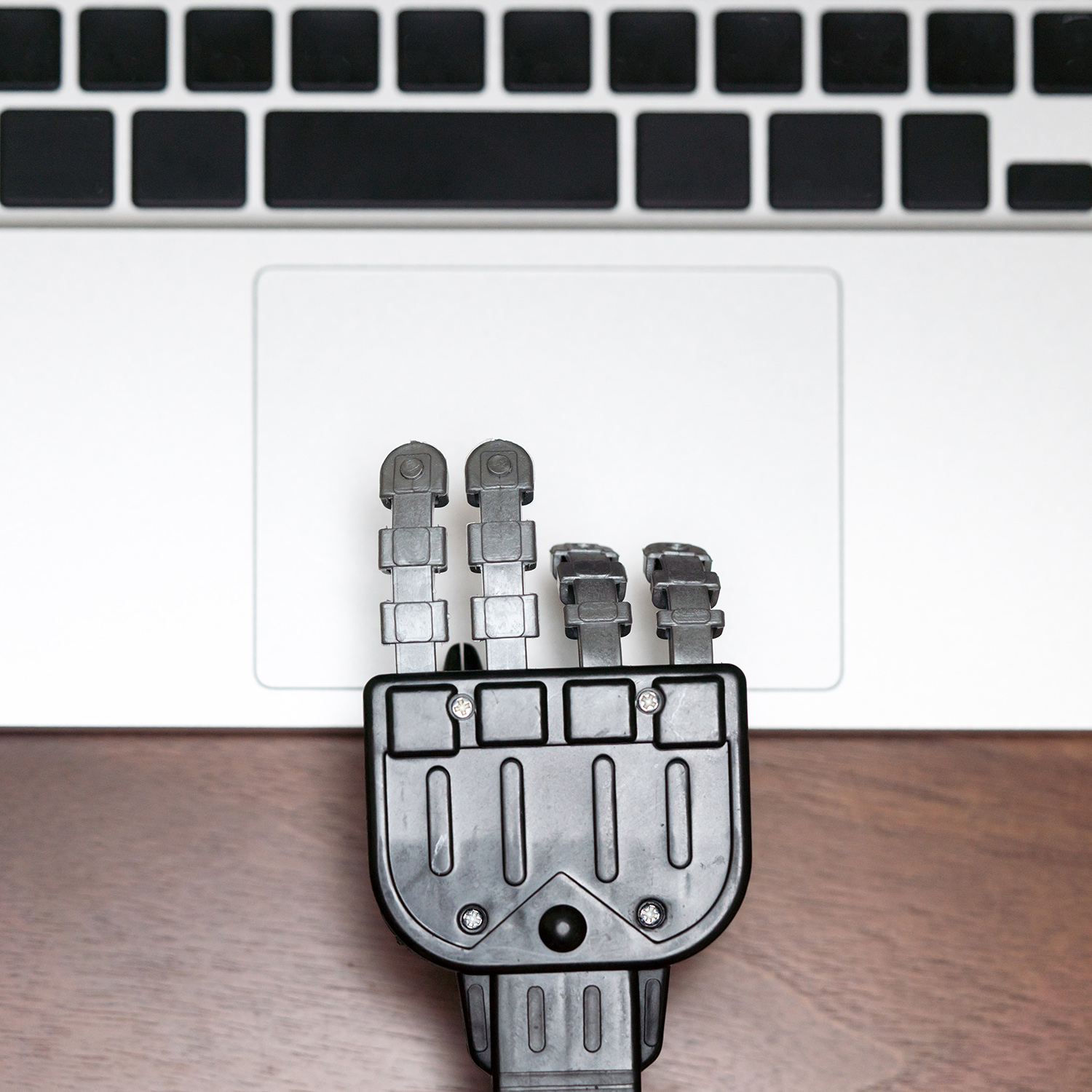Researchers Develop Improved Methods of Noninvasive Mind Control of a Robotic Arm

Researchers have developed improved methods for mind control of a robotic arm that can continuously track and follow a randomly moving target. The research is an important step in developing interfaces between the human brain and external computers, and has important implications for the continued development and implementation of neurorobotics. The study, funded partly by the National Center for Complementary and Integrative Health (NCCIH), was published in a recent issue of Science Robotics.
For patients with severe neurological disorders, such as amyotrophic lateral sclerosis or spinal cord injury, technology that enables them to control devices with their minds could enhance the quality of life. However, some technologies of this type are not suitable for widespread use because they involve surgical implants. Noninvasive technologies that get mental signals from electroencephalographic (EEG) equipment would be more practical if they can be made to work well. No surgery is needed for technologies of this type; the user simply wears an EEG headcap.
In this study, the researchers, from Carnegie Mellon University and the University of Minnesota, were able to enhance brain-computer interface learning and improve the ability to track a computer cursor using noninvasive, EEG-based technology. Additionally, the technology demonstrated a near-seamless transition from the control of an unconstrained virtual cursor to the real-time control of a robotic arm.
Sixty-eight people were involved in different phases of the study:
- Thirty-three people who had never used devices that interface between the brain and computers participated in 10 training sessions with the new technology and averaged 2 to 3 sessions per week.
- Twenty-nine people (16 of whom had some previous brain-computer interface experience) participated in experiments that tested within-session effects of source versus sensor control on the continuous pursuit brain-computer interface task.
- Six people participated in experiments comparing virtual cursor and robotic arm control.
The researchers noted their noninvasive framework enhanced brain-computer interface learning by nearly 60 percent for certain tasks and by more than 500 percent for others. Users were able to smoothly transition between virtual cursor and robotic arm control with minimal changes in performance, indicating the potential ease of integrating such a noninvasive assistive tool into clinical applications for autonomous use in daily life.
The researchers say clinical interest is rapidly building for systems that allow patients to interact with their environment through autonomous neural control. This work highlights the potential of noninvasive brain-computer interfaces to translate to real-world devices for practical tasks and eventual clinical applications. Future research efforts on approaches that enhance the brain-computer interfaces, including through targeted mind and body trainings, could accelerate the translations for clinical applications.
Reference
- Edelman BJ, Meng J, Suma D, et al. Noninvasive neuroimaging enhances continuous neural tracking for robotic device control. Science Robotics. 2019;4(31):eaaw6844.
Publication Date: June 19, 2019